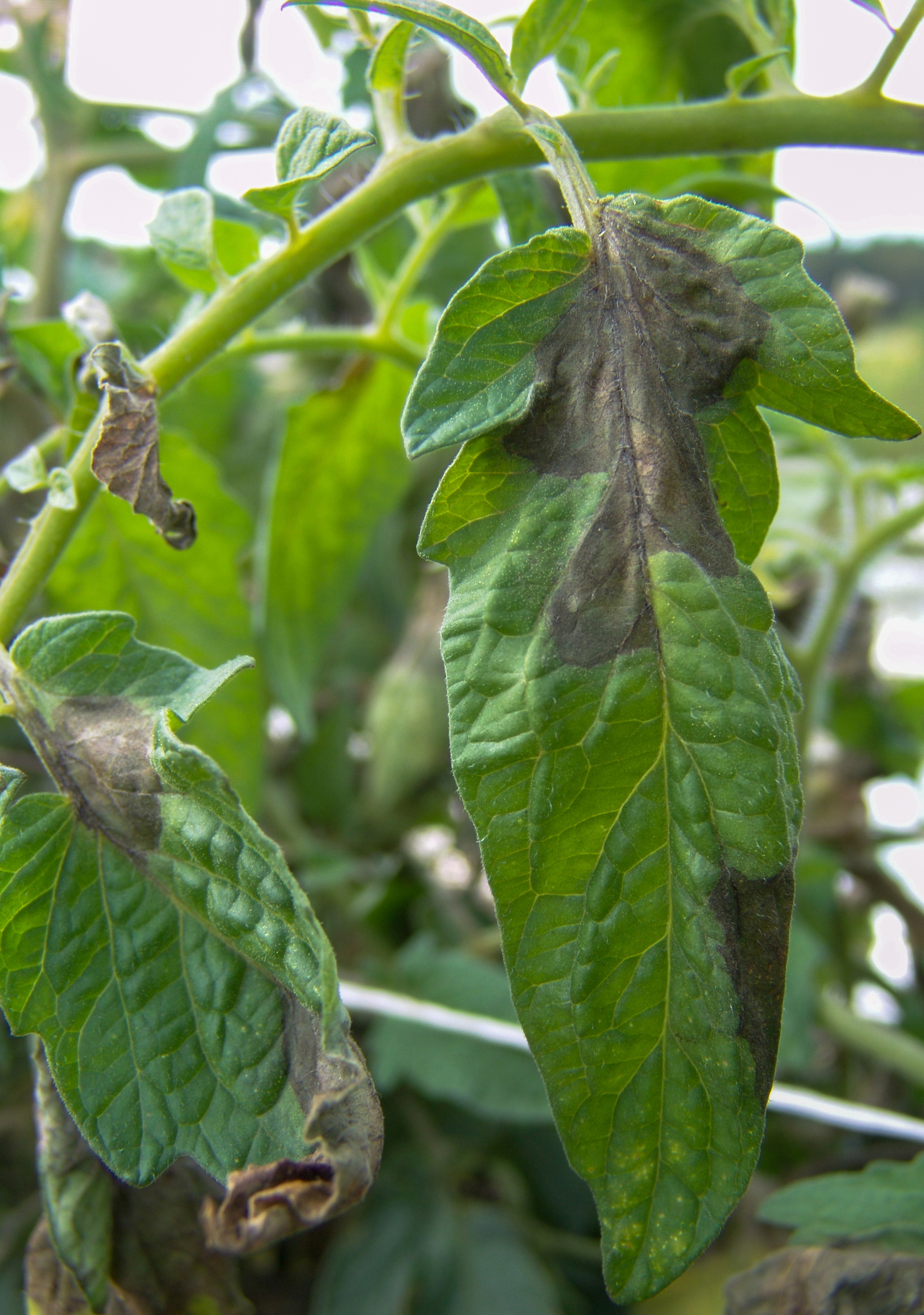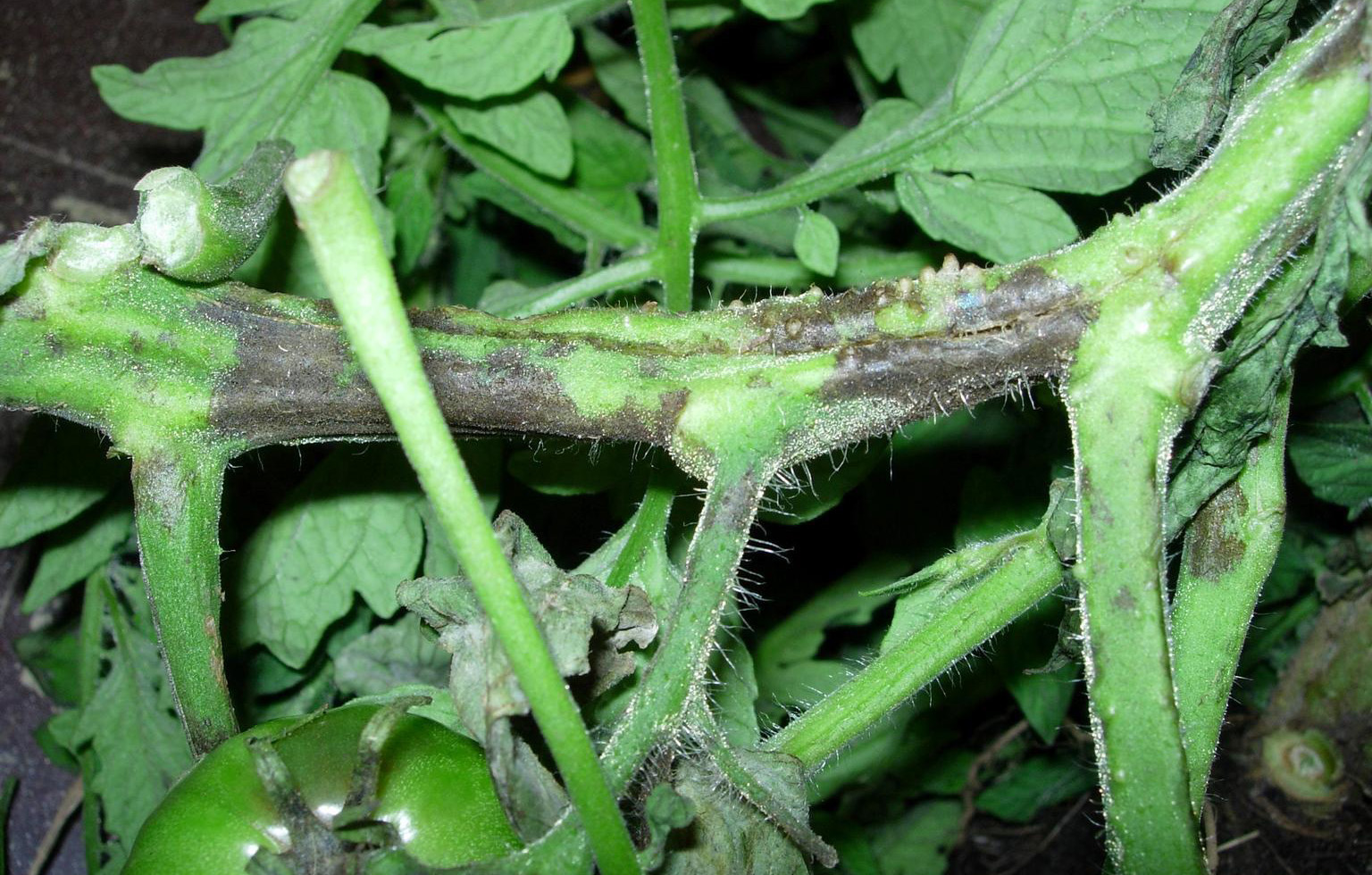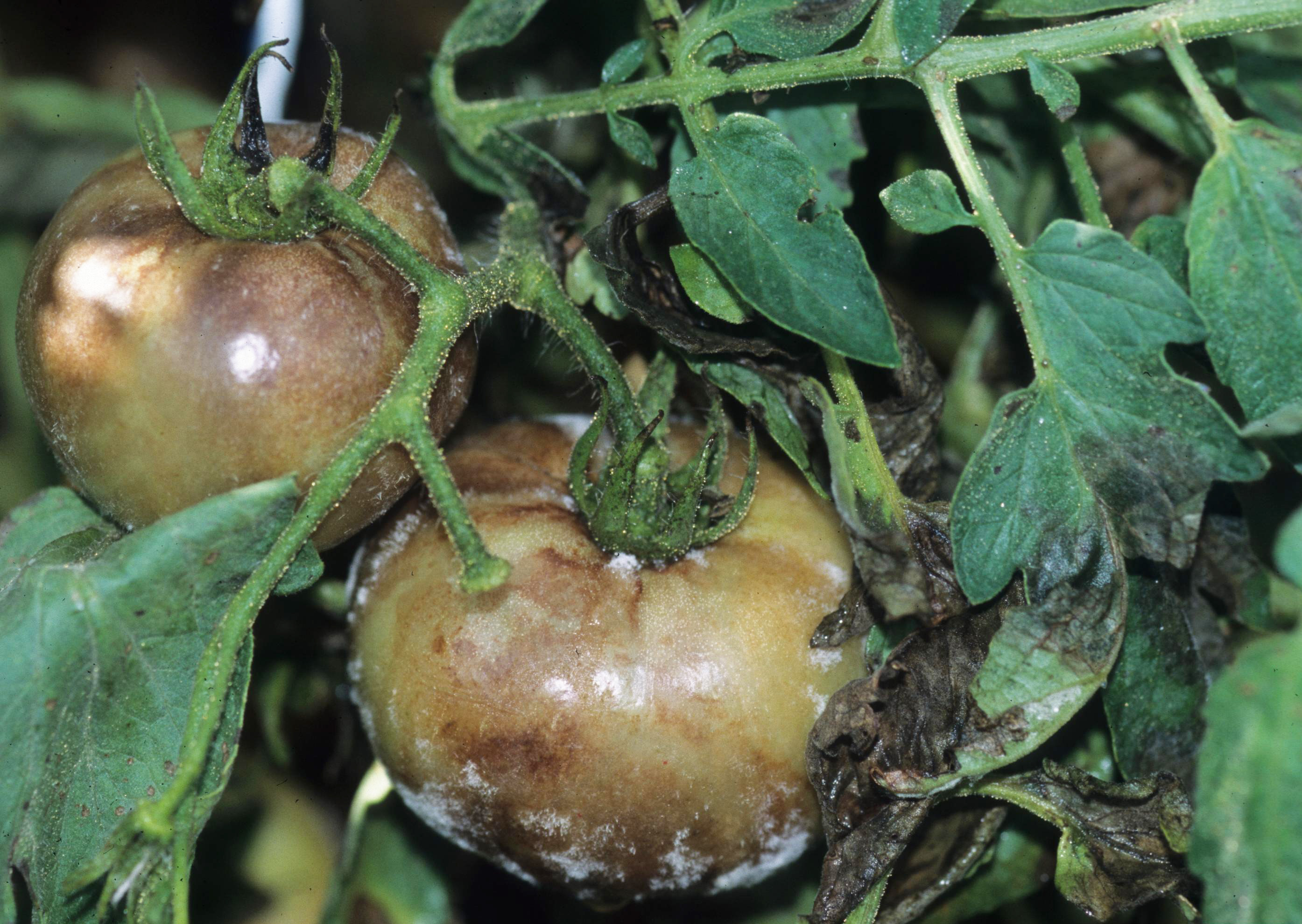Late Blight of Tomato
Return to Diseases
Late blight (Phytophthora infestans) symptoms may be observed on leaves, stems, and fruit. On leaves, individual lesions begin as water-soaked areas that can enlarge quickly and result in extensive blighting (sudden death) of leaves. Under cool, humid conditions, sporulation (whitish-gray downy-type growth) can be observed on the undersides of affected leaves. Fruit exhibit darkened, water-soaked spots that coalesce, often covering much of the fruit. Severely infected fruit are invaded by secondary organisms, resulting in a rapid, soft decay. Late blight is relatively rare in Kentucky, and most likely to occur during periods of cool, wet weather (often in autumn).

Late blight on leaf.
(Photo: Gerald Holmes, Strawberry Center, Cal Poly San Luis Obispo, Bugwood.org)

Late blight on stem.
(Photo: Elizabeth Bush, Virginia Polytechnic Institute and Sate University, Bugwood.org)

Late blight on fruit.
(Photo: Gerald Holmes, Strawberry Center, Cal Poly San Luis Obispo, Bugwood.org)
Management:
- Rotate to non-host crops for at least three years
- Purchase pathogen-free seed and transplants
- Immediately remove and destroy infected plants
- Apply protectant fungicides to non-infected plants after an outbreak or when outbreaks are reported in the area
- Promptly destroy crop residues after harvest
- Deep plow to bury residual inoculum
- Avoid movement of infested soil to clean fields
